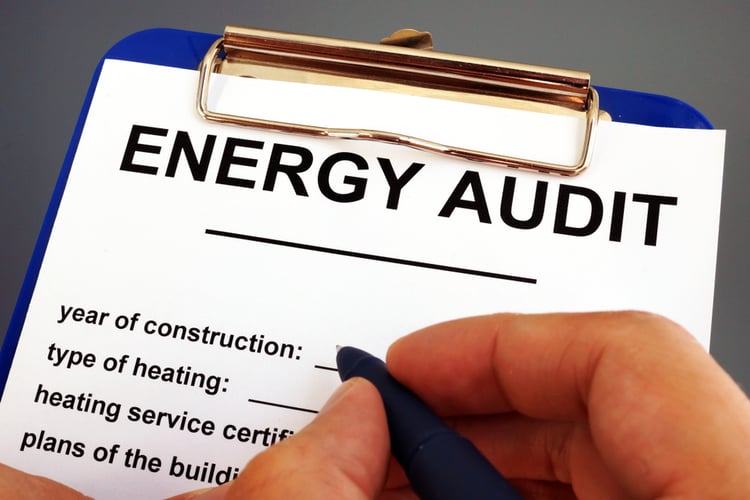How To Retrofit a Building at Zero Upfront Cost

A deep retrofit has the potential to reduce the energy consumption of a building over 50%, and this comes with a similar reduction of its carbon footprint. However, building retrofits can be very expensive, and the Rocky Mountain Institute found that costs can range from $25 to $150 per square foot. Based on this cost range, the owner of a 500,000 sq.ft. building can expect a capital expenditure from $12.5 to $75 million.
Meet the building emission limits in Local Law 97 with a deep energy retrofit.
If you’re planning a deep energy retrofit in NYC as a way to meet Local Law 97, the upfront costs can seem overwhelming. However, it’s possible to bring the out-of-pocket cost down to zero with the following strategy:
- Get a professional energy audit, to identify the building upgrades that will achieve the highest energy savings and emission cuts.
- After the energy audit, get a professional engineering design to optimize the retrofit project cost, while getting a quick approval with the NYC Department of Buildings.
- You can reduce upfront costs with financial incentives like grants and rebates, and NY Engineers can help you qualify for these benefits.
- Use a low-interest loan to complement the incentives, and pay the loan over time with the savings achieved. For example, C-PACE loans can split your investment over a repayment period of up to 30 years.
With this approach you can achieve a major reduction of your energy bills, while meeting the emission limits established in LL97/2019. You can also reach an energy grade of “A”, making your building much more attractive for potential tenants.
1) Getting a Professional Energy Audit and Design

Equipment suppliers will often advertise the typical savings achieved by their products, and this often guides purchase decisions. However, the actual results in your building can be very different. Another common approach is estimating energy savings with “rules of thumb”, but this often leads to inaccurate results. If you want a reliable calculation of the energy savings achieved after a building upgrade, the best recommendation is getting a professional energy audit.
Energy consultants can carry out a professional assessment of your building systems, identifying the best opportunities to save energy. This helps you prioritize your investment, focusing on the measures that achieve the highest savings per dollar spent.
- For example, an LED lighting retrofit can achieve major savings in a building with old fluorescent lighting.
- On the other hand, the savings are much lower when replacing LEDs from a few years ago, with newer LED products that only improve efficiency by a slight percentage.
Generally, the energy efficiency measures with the lowest costs are those related to lighting systems, automatic controls, ventilation and plug loads. Space heating and air conditioning upgrades come with higher costs, and building envelope upgrades tend to be the most expensive.
Once you know the ideal combination of energy efficiency measures for your building upgrade, the next step is getting a professional design. Ideally, the design should optimize equipment choices and building system layouts to reduce installation costs. Meeting local building codes and getting a quick approval from the local building department is also very important.
2) Reducing Building Retrofit Costs with Incentives

There are many energy incentive programs throughout the US, and they vary depending on your state and utility company. Incentives can take many forms such as cash rebates, renewable energy credits, tax credits and tax exemptions. In the case of NYC, two of the best-known examples are the Con Edison incentive program and the NY-Sun program from the NY State Energy Research & Development Authority.
Incentive programs reduce the net cost of deep energy retrofits and other similar projects, shortening their payback period and boosting their ROI. However, program managers want to ensure their funds are used properly, and these programs normally have stringent requirements for project owners. If you want to make sure your building upgrade qualifies, the best recommendation is contacting an experienced design and consulting firm like NY Engineers.
3) Using Low-Interest Loans to Complement Incentive Programs
The cost of a deep energy retrofit can be greatly reduced if you qualify for multiple incentives. However, there are only certain cases where incentives alone are enough to cover the entire project budget. For most building owners, there will still be an upfront cost after subtracting benefits like rebates and tax credits.
Due to their environmental benefit, building retrofits can qualify for C-PACE loans and other low-interest financing options. This means the upfront cost can be reduced to zero, and you can start saving on power and gas bills as soon as the project is completed. In the case of NYC, a building retrofit can also help you avoid emission penalties under LL97 of 2019. All these savings can be used to pay the loan over time, which means your building retrofit covers its own cost.

Michael Tobias
Michael Tobias, the Founding Principal of NY Engineers, currently leads a team of 150+ MEP/FP engineers and has led over 4,000 projects in the US
Join 15,000+ Fellow Architects and Contractors
Get expert engineering tips straight to your inbox. Subscribe to the NY Engineers Blog below.

